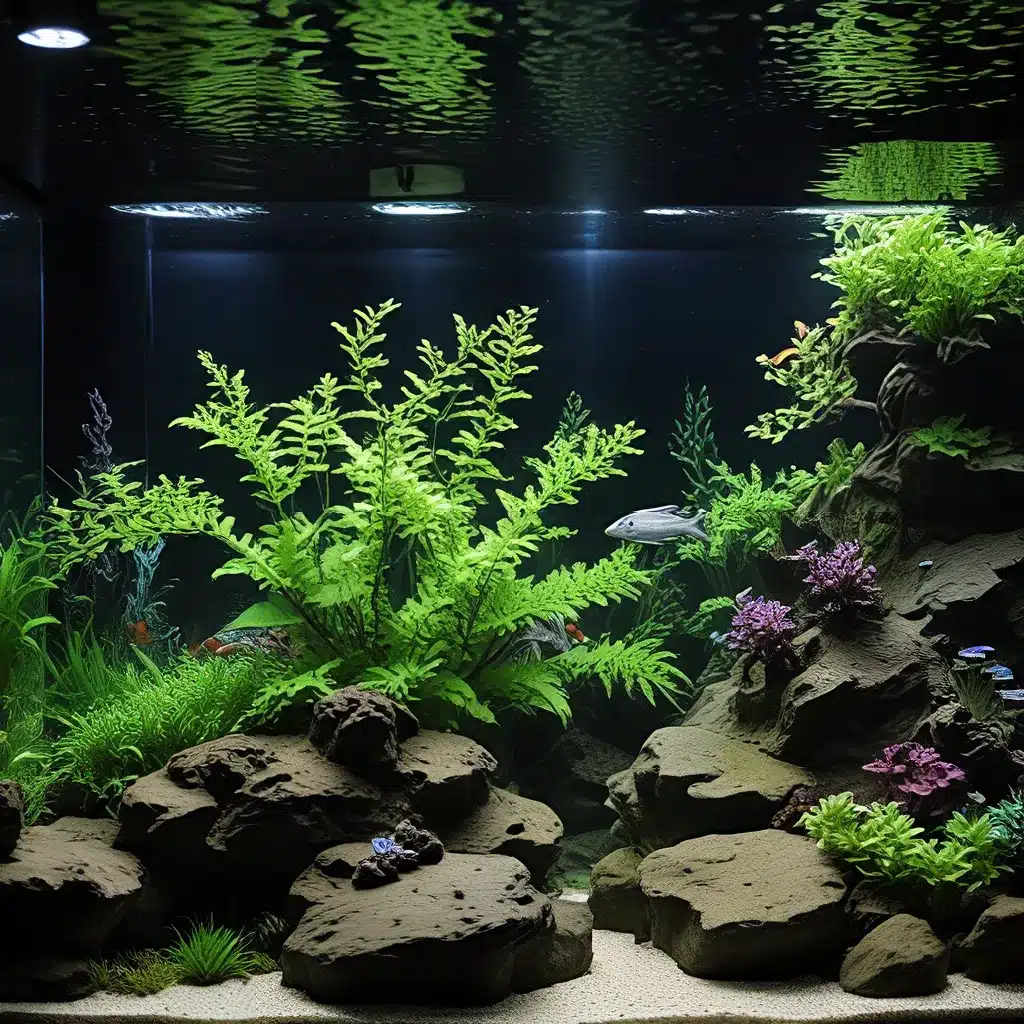
Understanding the Importance of Aquarium Lighting
Lighting is a fundamental aspect of aquarium maintenance, playing a crucial role in the health and well-being of your aquatic inhabitants. Whether you’re a beginner or an experienced aquarist, mastering the intricacies of aquarium lighting is essential for creating a thriving underwater ecosystem. In this comprehensive guide, we’ll unravel the complexities of aquarium lighting, providing you with the knowledge and insights needed to optimize your aquarium’s luminous environment.
The Spectrum of Aquarium Lighting
Aquarium lighting encompasses a wide range of wavelengths, each serving a specific purpose in the aquatic ecosystem. From the warm, soothing tones of incandescent bulbs to the vibrant, energy-efficient LED arrays, the choice of lighting can significantly impact the growth and development of your aquarium’s inhabitants. Understanding the different types of aquarium lighting and their corresponding benefits is crucial for creating a balanced and visually appealing underwater landscape.
The Importance of Lighting Intensity
Lighting intensity, measured in lumen or wattage, plays a vital role in the overall health and well-being of your aquarium. Too little light can lead to stunted plant growth, while excessive lighting can cause algae blooms and stress for your fish. By calculating the appropriate lighting intensity for your tank size and inhabitants, you can ensure your aquarium thrives.
Lighting Duration and Photoperiod
In addition to intensity, the duration and photoperiod of your aquarium lighting are equally important factors to consider. Replicating natural day-night cycles is essential for simulating the rhythms of the natural world, allowing your aquatic life to adjust their behavior and metabolic processes accordingly. Carefully managing the lighting schedule can have a significant impact on the overall health and well-being of your aquarium.
Aquarium Lighting Strategies
When it comes to aquarium lighting, a one-size-fits-all approach simply doesn’t exist. Each aquarium ecosystem has unique requirements based on the species, plants, and overall goals of the setup. By exploring a variety of lighting strategies, you can optimize the luminous environment and create a thriving underwater haven.
Planted Aquarium Lighting
Aquarium plants are the lifeblood of a thriving underwater ecosystem, and their lighting needs are of utmost importance. Whether you’re working with low-light or high-light plant species, understanding the appropriate lighting requirements is crucial for promoting lush, vibrant plant growth. By selecting the right lighting solutions, you can create a visually stunning and biologically balanced planted aquarium.
Reef Aquarium Lighting
Coral reefs are renowned for their captivating beauty and intricate ecosystems, and aquarium lighting plays a pivotal role in their maintenance. From the intense lighting needs of SPS (small-polyp stony) corals to the more moderate requirements of LPS (large-polyp stony) corals, choosing the correct lighting setup is essential for the health and growth of your reef inhabitants. By understanding the unique lighting demands of different coral species, you can create a thriving and visually stunning reef aquarium.
Freshwater Aquarium Lighting
While reef aquariums require specialized lighting, freshwater aquariums offer a more diverse range of lighting options. From lush planted tanks to showcasing the vibrant colors of your favorite freshwater fish, the right lighting can make all the difference in your aquarium’s aesthetic and ecological balance. Whether you prefer LED, T5 fluorescent, or a combination of lighting solutions, understanding the unique needs of your freshwater inhabitants is crucial for creating a captivating underwater paradise.
Optimizing Aquarium Lighting for Vibrant Ecosystems
Aquarium lighting is not just about aesthetics – it’s a critical component of a balanced and thriving underwater ecosystem. By carefully considering factors such as light intensity, spectrum, and photoperiod, aquarists can create an environment that supports the diverse needs of their aquatic inhabitants, from vibrant plant growth to the health and well-being of their fish.
One of the key benefits of optimizing aquarium lighting is the promotion of robust biological filtration. Beneficial bacteria, which play a crucial role in maintaining water quality, thrive in environments with the right balance of light and nutrients. By ensuring your aquarium’s lighting promotes the growth and activity of these beneficial microorganisms, you can effectively manage waste and maintain a clean, healthy aquatic environment.
Moreover, the strategic use of aquarium lighting can enhance the natural behaviors and coloration of your fish. Many species exhibit more vibrant hues and engage in more natural behaviors when exposed to lighting that mimics their natural habitat. By understanding the lighting preferences of your fish, you can create an environment that allows them to thrive and display their full beauty.
Ultimately, mastering the art of aquarium lighting is a journey of exploration and continuous learning. As you delve deeper into the world of aquarium care, King Aquarium encourages you to experiment, observe, and adapt your lighting strategies to create a thriving and visually stunning underwater oasis.

